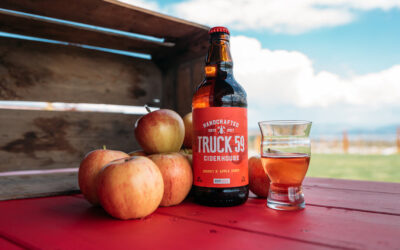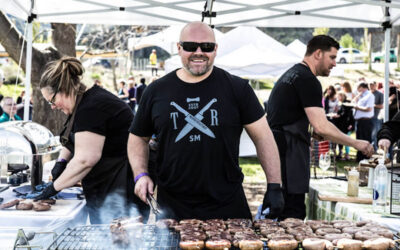Local winemakers find Okanagan conditions ideal for making memorable rosés.
Pink-drinkers, rejoice!
 Closely associated with the grape growing regions around the Mediterranean, rosé has found a niche in the Okanagan Valley where the climate is similarly dry and hot and the soils littered with heat-absorbing stones. The mantra for making fine rosé is a method called saignée, or bleeding, in which black grapes are macerated in contact with the skins very gently for 24 or 48 hours. The juice is then run off the skins, the resulting depth and intensity of colour dependant on the length of time in contact with the skins, as well as the type and ripeness of the grapes.
Closely associated with the grape growing regions around the Mediterranean, rosé has found a niche in the Okanagan Valley where the climate is similarly dry and hot and the soils littered with heat-absorbing stones. The mantra for making fine rosé is a method called saignée, or bleeding, in which black grapes are macerated in contact with the skins very gently for 24 or 48 hours. The juice is then run off the skins, the resulting depth and intensity of colour dependant on the length of time in contact with the skins, as well as the type and ripeness of the grapes.
In the real world, rosés vary from candy floss pink, with an easy-drinking delicately fruity personality, to golden salmon or deep pink, with a gutsy richly-textured palate. At one end of the spectrum think White Zinfandel, the light-coloured medium–sweet uncomplicated “blush” wine that originated in California. It became so popular that producers struggled to keep up with demand.
At the other extreme, Tavel, a small appellation near Châteauneuf-du-Pape, is strictly in the business of making the world’s most famous and arguably its greatest rosé.Rugged and complex, with robust red fruit and spice flavours and a bone dry finish, it is made using a technique called carbonic maceration in which the grapes are crushed by their own weight, allowing each berry to start its own fermentation.
These techniques can also be used to make rosé sparkling wine, although genuine Champagne often includes a mix of red and white varieties, as well as pink-coloured Icewine or late harvest wine. Aging in oak is rare but not unheard of for a few adventurous winemakers.
Not all rosés are made for immediate consumption before the wine starts to lose its intensely fresh, lively fruit, according to the Okanagan Crush Pad’s chief winemaker, Michael Bartier. To prove the point, the winery held back 200 cases each of 2010 Haywire Rosé and 2010 B•S Rosé (see reviews) as prime examples of how patience pays off. “The styles are quite different, but they will continue to improve in the bottle for some time,” Bartier says. “The reason we can do this is based on two key principles: a conscious winemaking style and the natural acidity found in Okanagan Valley grown fruit.”
See the reviews. Next Page >>




0 Comments